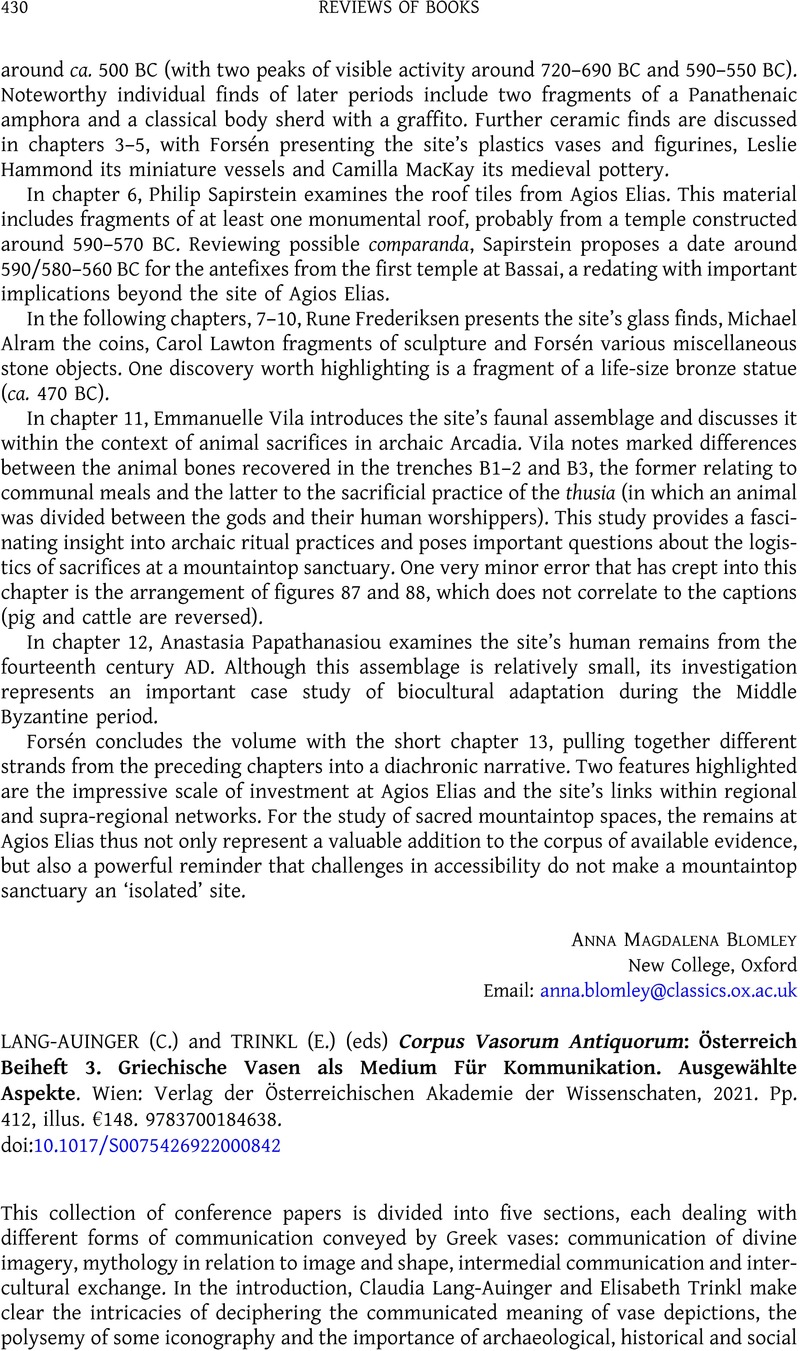No CrossRef data available.
Article contents
(C.) LANG-AUINGER and (E.) TRINKL (eds) Corpus Vasorum Antiquorum: Österreich Beiheft 3. Griechische Vasen als Medium Für Kommunikation. Ausgewählte Aspekte. Wien: Verlag der Österreichischen Akademie der Wissenschaten, 2021. Pp. 412, illus. €148. 9783700184638.
Review products
(C.) LANG-AUINGER and (E.) TRINKL (eds) Corpus Vasorum Antiquorum: Österreich Beiheft 3. Griechische Vasen als Medium Für Kommunikation. Ausgewählte Aspekte. Wien: Verlag der Österreichischen Akademie der Wissenschaten, 2021. Pp. 412, illus. €148. 9783700184638.
Part of:
Art and archaeology
Published online by Cambridge University Press: 11 April 2023
Abstract
An abstract is not available for this content so a preview has been provided. Please use the Get access link above for information on how to access this content.

- Type
- Reviews of Books: Archaeology
- Information
- Copyright
- © The Author(s), 2023. Published by Cambridge University Press on behalf of the Society for the Promotion of Hellenic Studies


